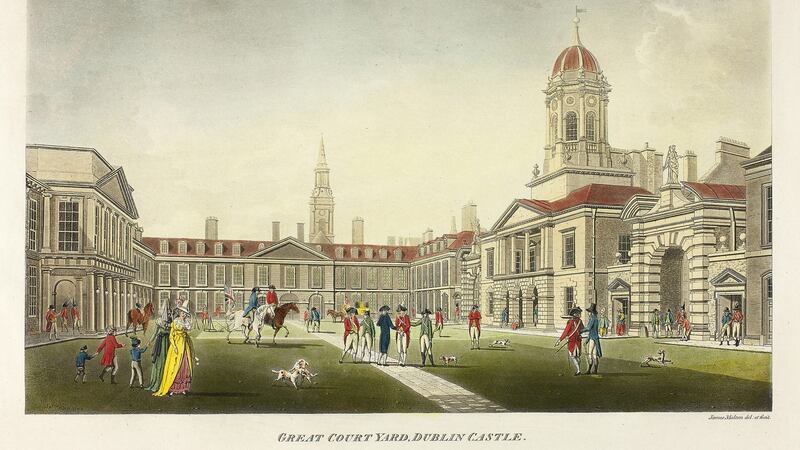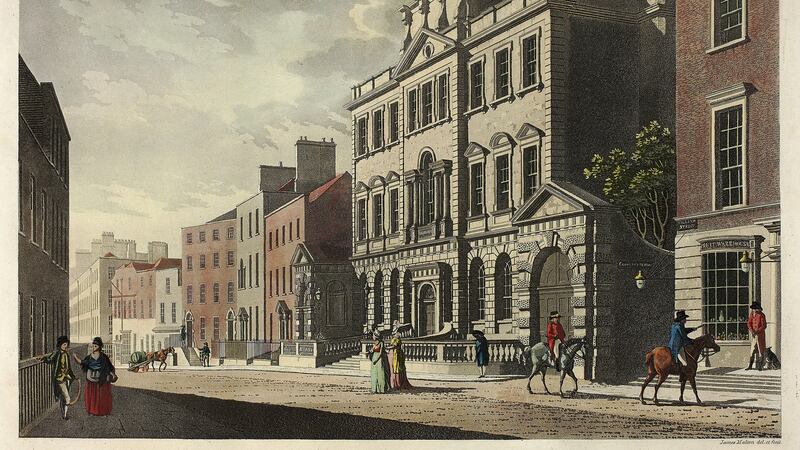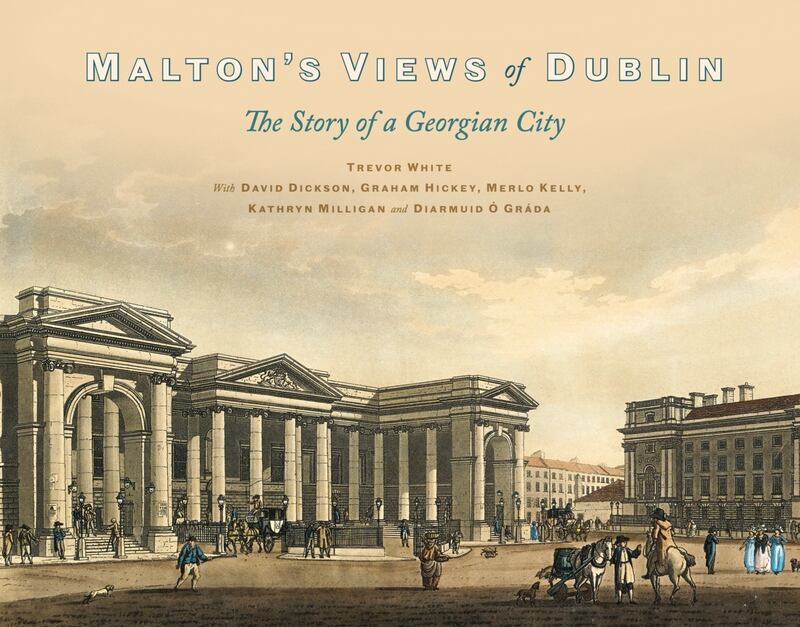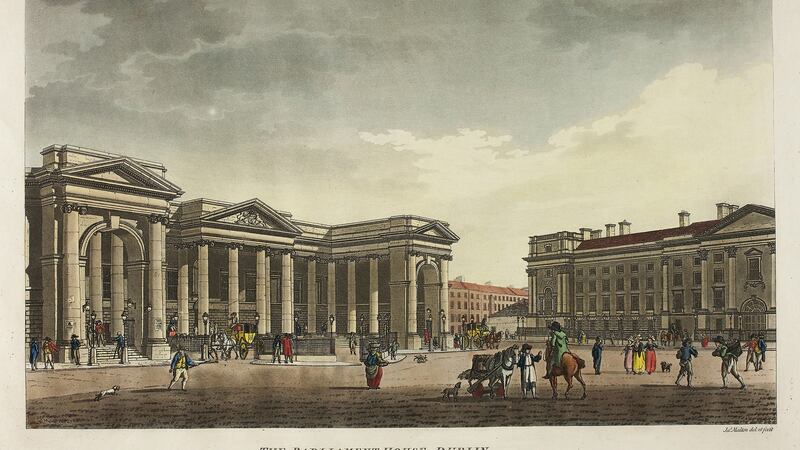The actions of a small number of men and women can have a dramatic impact on the development of a city. As readers consider a new direction for Dublin – the most fashionable parlour game of the season – it is useful to recall some of the people who could inspire us to build something more beautiful and more just than an ordinary city. To create a modern European capital that is worthy of the name, we must look backward as well as forward.
The modern history of the city began on July 27th, 1662, when James Butler, Duke of Ormond, returned to Ireland to serve in the newly restored position of viceroy. In Dublin 1660-1860, Maurice Craig wrote of this event, “The Renaissance, in a word, had arrived in Ireland.” During his 10-year exile with Charles II, Ormond had visited the court of Louis XIV in Paris. There he came to appreciate how great architecture and urban planning can enhance the status of a city.
In Frank McDonald’s new book, A Little History of the Future of Dublin, the author observes that the Duke of Ormond was the first man to imagine the metropolis that Dublin might become. More than three centuries after his death, the legacy of Ormond’s term as viceroy is apparent in the Royal Hospital, Kilmainham; in St Stephen’s Green and Smithfield; in the enclosure of the Phoenix Park. Most Dubliners would blanch at the thought of using the Liffey as a place for washing and defecating. It was Ormond who established a formal quay line and street on the Liffey quays, with buildings facing the river in the European manner.


The Age of Ascendancy led others to follow Ormond’s example. The years between 1714 and 1830, when four king Georges reigned on the throne, were a golden age for architecture in the city. The construction of thoroughfares by the Wide Streets Commission, along with a property boom, made Dublin a much grander place, arguably the second city of the British Empire. Architects such as James Gandon, Thomas Cooley and Edward Lovett Pearce worked here, and most of our grand public buildings, such as the Four Courts, the Custom House and City Hall, were built during this time. Many of the builders and craftsmen were Irish, often from Dublin itself.
Henrietta Street was one of the earliest Georgian developments. (It is the subject of three handsome new books published by Dublin City Council.) However, society moved south of the Liffey after Leinster House was built for the Earl of Kildare. Townhouses were built around new squares, allowing residents to enjoy lovely gardens in the centre. Merrion Square, St Stephen’s Green and Fitzwilliam Square became the most fashionable addresses in Dublin.
Iconic streets lined with largely uniform brick townhouses, featuring beautiful doors framed by fanlights, give the Georgian city its character. Although the size of the houses varies, the style remains refined and tasteful, without much ornament or fuss. As VS Pritchett once observed, “The tall Georgian windows, the pilastered doorways, the fine fanlights, have a family dignity unspoiled by extravagance or pomp.”

Malton depicted Dublin as one of the most splendid European capitals
By the end of the 18th century, Dublin was the second-largest city in these islands. The key elements of this new city were captured by a young architectural draughtsman called James Malton. His 25 aquatint engravings constitute a striking group portrait of the city in the 1790s, just before power returned to London with the Act of Union in 1800.
Malton depicted Dublin as one of the most splendid European capitals. There are broad thoroughfares lined with elegant buildings, opulent squares of red-brick terraced houses, and grand public buildings. His pictures are the bare bones of a great Dublin drawing room. (The Irish Times once described them as “ubiquitous to the point of invisibility”.) But Malton was a salesman as much as an artist. He always had an eye on the market, hence the “atmosphere of Arcadian clarity” – Maurice Craig’s phrase – that is evident throughout these engravings. The artist largely ignored the reality of life on the streets of the city.

In producing a new book about Malton, Djinn von Noorden and I wanted to give readers a broader context than they might hope to find in a traditional work of art history. So, we asked writers and historians David Dickson, Kathryn Milligan, Graham Hickey and Merlo Kelly to contribute essays. Their stylish reflections enhance our understanding of Malton’s achievement.
For example, Kathryn Milligan draws our attention to a large pineapple in the window of the Fruit Warehouse on South William Street. That part of town was, she writes, “sustained by a market for luxury goods brought into the city to supply the best tables”. Our book also tells the rather miserable story of the artist himself. An adventurer from London who threw himself at Dublin, James Malton came away broke and died, childless and unmarried, at the age of 38.
All he left us was the very idea of Georgian Dublin.
Malton gives us a Dublin for our dreams. Like all fantasies, it is not entirely accurate. Nowadays, no one embarking on such a venture would largely ignore the reality of life on our streets
We also asked historian and planning consultant Dr Diarmuid Ó Gráda to write an essay that serves as a bracing counterpoint to Malton’s heavily airbrushed city. “Anger and despair could be dangerous emotions when combined with cold and hunger,” writes Ó Gráda. “Street violence grew and there were periods when the city was running out of control.” In Malton’s view of the Beaux Walk, an unofficial marriage market for the well-to-do, Ó Gráda notes the presence of two basket-girls, ragged and barefoot. “They are set well away from the refined promenaders.” To my shame, I had never noticed the girls, whose presence seems almost subversive.
Ó Gráda notes that Dublin was a dangerous place where rioting was commonplace. “Housekeepers were encouraged to keep a blunderbuss handy.” Between 1780 and 1795, there were 242 thieves hanged. Kidnapping was common, with victims as young as four years old. A woman who tried to steal three children in Francis Street was executed. “Others were thrown into the Liffey, had their ears cut off or were dragged naked through the gutter.” Boys and girls were often abducted by beggars. “A favourite ploy was to disfigure them, to arouse compassion in the alms givers. Limbs might be broken in this process.”
Malton gives us a Dublin for our dreams. Like all fantasies, it is not entirely accurate. Nowadays, no one embarking on such a venture would largely ignore the reality of life on our streets. However, the artist, his etchings and the city they represent all retain the power to inspire us today.
When civic-minded people dare to imagine a more ambitious future, great things can happen. The Duke of Ormond is widely remembered. Far less is known about the man who captured Ormond’s legacy in a survey of Dublin at the height of its golden age. This is a pity, because Malton has an important message for us all. As the architect Tony Reddy told me recently, “James Malton challenges us to create buildings and places that might be remembered with pride and affection by citizens two hundred years from today.”
We ignore him at our peril.
Trevor White is director of the Little Museum of Dublin. Malton’s Views of Dublin and A Little History of the Future of Dublin are both published by Martello Publishing



















